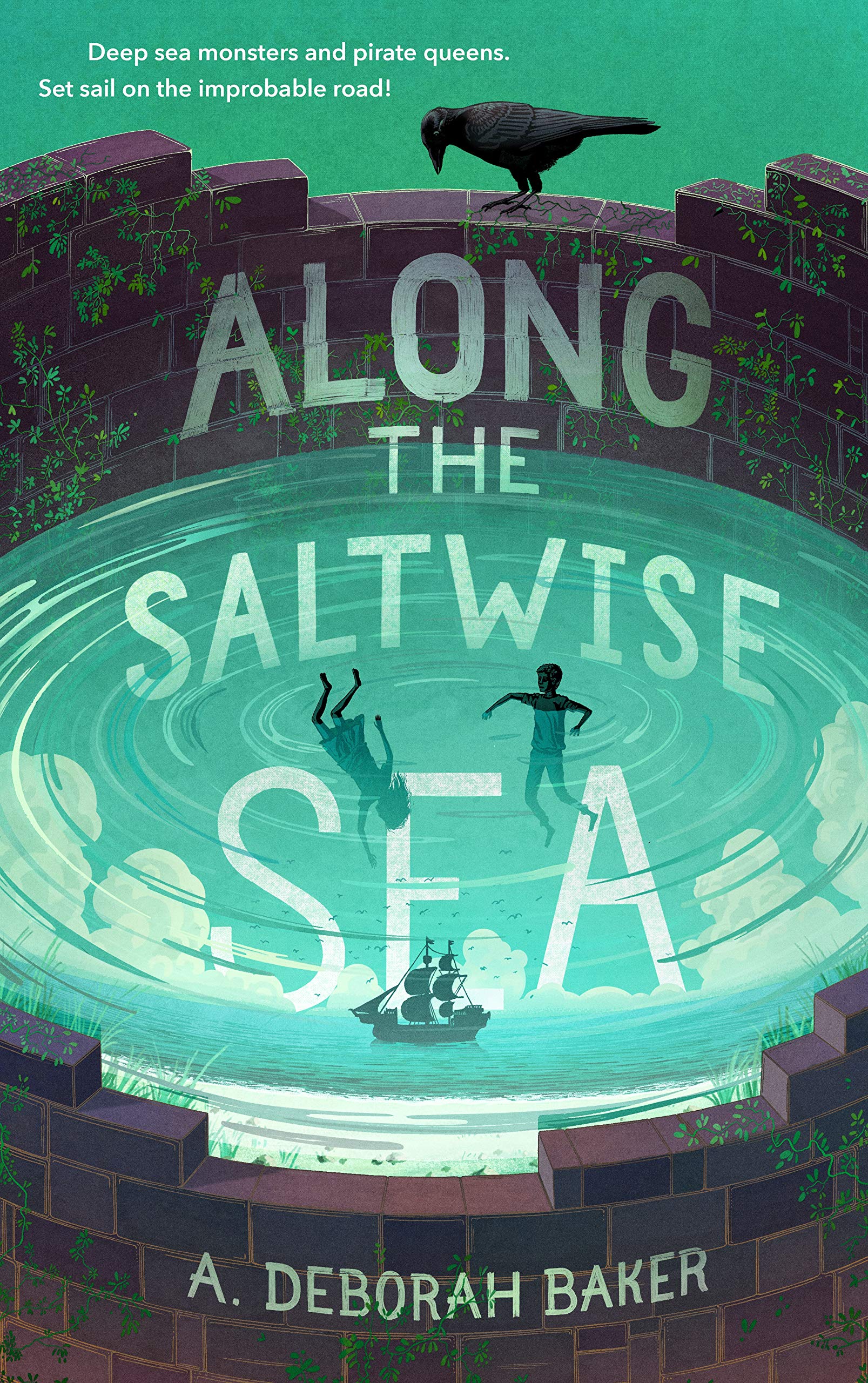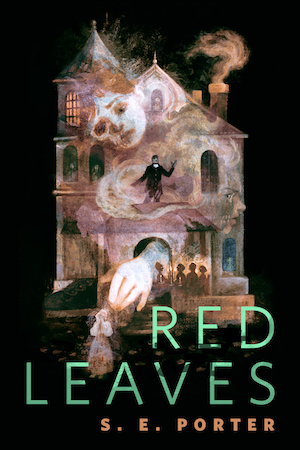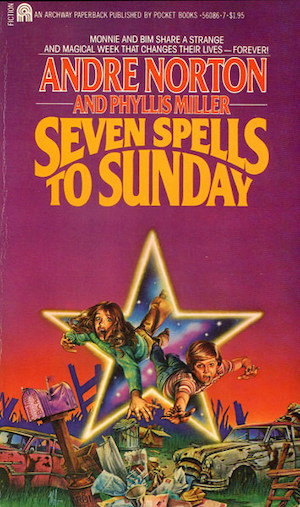In Seven Spells to Sunday we have another of Andre Norton’s collaborative novels for children, from the same publisher and the same era (mid to late Seventies) as the Star Ka’at series. According to the author bios, her collaborator, Phyllis Miller, had the idea, “inspired by a young reader who asked for a book about ‘real magic.’” But the book reads as pretty much straight Norton.
There are two protagonists, both misfits, both in foster care. Monnie is a tough, streetwise, not very nice almost-ten-year-old. Bim is about the same age, much more timid, and much beset with bullies at school and on the street. They live with a nice couple who have a daughter in her late teens, but they’ve both been bumped around the system and they both expect to be moved on sooner or later. There’s no talk of their being adopted. They clearly expect to keep living in other people’s houses until they finally age out of the system.
Then one day, in a vacant lot near the apartment, Monnie finds an old purple mailbox. Moved by an impulse she can’t explain, she salvages it and sets it up. She writes her name on it and, again for no explainable reason, makes up a letter to put in it, asking for mail in return.
Bim catches her at it and adds his own name to the box. Monnie resents that, and him, very much, but once it’s done, there’s no changing it. They’re both caught up in whatever purpose the box has for them.
Over the next week, on alternating days, the children start receiving mail in purple envelopes with the name of the recipient on each one, and stars instead of stamps. Monnie gets girl-coded things: a silver broom charm, a “Voo-don’t” (versus voodoo) doll, a magic mirror. Bim gets boy things: a silver wand, a strange candle or torch, a wire star.
Each item has magical powers. The first two of each set work beneficial magic. The third is darker. Then on Sunday, all is revealed, as the star snatches Bim away to a strange, witchy past, and Monnie gets lost in the space between portals and has to be rescued. Finally, when all the magic has worked itself out, the children emerge to a new and hopeful future.
It’s still not adoption, but rather a sort of positively spun orphanage/halfway house. Which is a little bit strange and a little bit sad. I really was expecting the Johnsons to adopt them, instead of announcing that they’re about to move elsewhere to care for a sick relative, so it’s great timing that the foster kids have been selected for this great new program. The kids seem to think this is wonderful news, but it feels like kind of a letdown.
Buy the Book


Along the Saltwise Sea
It’s an odd book. The moral undertone is strong, and it’s heavily gendered. Monnie’s magical plot coupons teach her to clean up messes (both her own and others’), wish good things for other people, and overcome and vanquish her own worst impulses. Bim’s versions save him from bullies and teach him to stand up for himself. He has to face his dark side, too, but not nearly as explicitly or at as much length as Monnie. Because girls have to suppress themselves so much more strongly than boys, while also doing the cleaning and the emotional labor. At least Bim volunteers to help Monnie clean up the worst mess her magic gets her into. And then of course he has to rescue her, though he also has to be told to do so by the witchy old lady.
I doubt either author was aware of the ways in which their story reinforced Seventies gender roles. Monnie is the assertive one and Bim is the constant victim, but the point of their magical journey is for her to become nicer and give herself a makeover, and for Bim to become more traditionally masculine. Then they get to go to, basically, boarding school. But it’s a good school! They’ll love it! And they get to stay, presumably, until they become adults.
One Norton tendency really stood out to me in this one. Both Monnie and Bim do most of the things they do without knowing why. That’s probably Norton’s most noticeable habit. The plot moves the characters, and the characters don’t have much say in it. Sometimes they do resist, but resistance is usually futile. The plot will do what the plot will do. The characters’ purpose is to comply.
I don’t really see “real magic” here, unless we’re meant to interpret “real” as kids from troubled backgrounds finding magic in the mundanity of a vacant lot and an abandoned mailbox. It’s still magic; it’s still outside the realm of the ordinary. It controls the kids rather than the other way around, and molds them into more conventionally acceptable versions of their original, grubby, misfit selves.
Next time I’ll move on to another novel with Sunday in the title: Sneeze on Sunday. That’s odd enough to be intriguing.
Judith Tarr has written historicals and historical fantasies and epic fantasies and space operas, many of which have been published as ebooks. She has won the Crawford Award, and been a finalist for the World Fantasy Award and the Locus Award. She lives in Arizona with an assortment of cats, a blue-eyed dog, and a herd of Lipizzan horses.











Q works beautifully on TNG because deLancie and Sir Patrick Stewart have simply perfect chemistry, which will likely hold true when the entity appears on Picard. His appearances on Voyager have been a sequence of diminishing returns, and when they finally address the elephant in the room regarding the fact that Q can get them home with a snap of his fingers, they botch that, too. Just a sodden, awful mess.
As I said back in…I think it was either the “Death Wish” or “Q and the Grey” talkbacks…”All Good Things” really should’ve been Q’s swansong — at least at the time.
I mean, we’ll have to see how his encore on the new Season of Picard fares (and his Lower Decks guest role was at least fun).
But I didn’t really care for this episode back in 2001 either — and not just because, at the time, it seemed a poor sendoff for DeLancie (since, as far as we knew, VOY’s final Season was the last hurrah of the 24th Century on TV).
Q’s crossover appearance on DS9 in retrospect should’ve been a warning that he wasn’t going to work outside of TNG — apart from, heh, Sisko decking Q.
Yes, a massive letdown and an unfortunate cheapening of the Q concept — never a great concept, but at least it had a certain consistency that’s largely discarded here. A Q child acting the same as a human adolescent is rather ridiculous. Q are transcendent beings that merely cosplay as humans so that we may comprehend them. It’s the equivalent of a zookeeper using a vulture hand puppet to feed baby vultures. It doesn’t reflect the underlying reality.
True, Voyager has made that mistake all along, with Q’s flirtations with Janeway. Although at least that had the excuse of giving close friends Kate Mulgrew and John DeLancie an opportunity to play Hepburn and Tracy together. Having q send Seven’s catsuit to the cornfield is just juvenile pandering.
The one thing about this episode that I’m grateful for is that it set the end of Kirk’s 5-year mission in 2270. The Okudas’ Chronology had conformed to Roddenberry’s preference that the animated series be ignored and had put the end of the 5YM in 2269, shortly after “Turnabout Intruder,” and thereby left virtually no room for either TAS or any of the novels or comics. Putting the end in 2270 provides room for those things again, at least up to a point.
Well, one more thing. Icheb’s mention of Kirk saving the Pelosians from extinction shortly before the end of the 5-year mission was the basis for my version of the end of that mission, which I described in retrospect in Ex Machina and then depicted in Department of Temporal Investigations: Forgotten History. As for the other two species Icheb mentioned as being saved from extinction by Kirk years earlier, I covered them more recently in The Captain’s Oath.
Thank you for the cornfield reference. The shot (pictured above) of Neelix without a mouth is 100% “It’s A Good Life” and just as horrifying and sudden.
“That’s all the television there is!”
The best part about Q appearing in Star Trek Picard season 2 is that this will no longer be the final appearance of the character.
Steven: Well, it wasn’t anyhow, thanks to Q’s appearance in “Veritas” on Lower Decks.
—Keith R.A. DeCandido
@4/krad: And Q was back in his Post-Atomic Horror Judge cosplay in “Veritas,” raising the same question you raised about the Q judges here.
Christopher: True, but I can forgive the deLancie Q wearing it out of nostalgia, if for no other reason. (Out of the box, it also made it easier for him to be identified given the rather simplistic animation style of LD….)
—Keith R.A. DeCandido
@3,
The best part about Q appearing in Star Trek Picard season 2 is that this will no longer be the final appearance of the character.
I’m still on the fence about bringing back Q at all — at least into Picard’s corner of the franchise.
I was fine with “All Good Things” being Q’s final appearance within the context of TNG and its own overrarching narrative. His final scene with Picard in the Court Room was, and still is, a perfect sendoff.
As happy as I am to see DeLancie snapping his fingers again, I’m still concerned Q’s role in the new Season of Picard will cheapen that.
The challenge is going to be what more you can add to the Picard-Q dynamic at this point.
One thing I can say in this episode’s favor is, in my opinion, the Janeway / Q dynamic works better here than in the previous two episodes, and I actually really enjoyed the dynamic in this episode. Q’s not trying to do that stupid pursue-Janeway-as-a-love-interest thing, he’s just trying to be a good parent. And I can see Janeway as one to give better parental advice than Picard would.
I had almost totally forgotten about this episode. Offhand, I’d recalled that Keegan deLancie played Q’s kid on Voyager, but I hadn’t recalled that it wasn’t part of “The Q and the Grey” or something.
“Don’t you Aunt Kathy me.” Deja Q was a better episode, but only because that’s one of the few Q episodes I really enjoyed (along with Tapestry, but Q seems a minor part there). They were more often than not tied in with boring holodeck type silliness. I also think Janeway’s role and performance were strong overall, and she does a good job as godparent. I also liked Itchy and Q-ball palling around. My heart broke a little at Q’s reaction to q’s essay. At least they provided a half-hearted reason why Q doesn’t send them home this time. Uses Janeway’s own words against her.